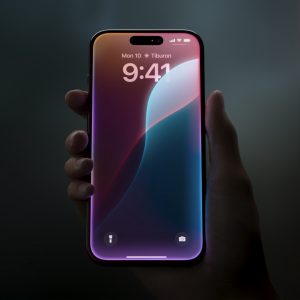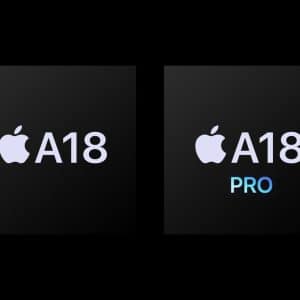Tamara Lewis uses her iPhone to search for Christmas presents for her daughter while waiting in the carpool line. At night, while watching the news in bed, she looks for boots on eBay from her iPad.

From the Wal-Mart parking lot, the 50-year-old Sandy Springs, Ga., resident Googled “dance games for Wii” on her phone. When a store employee told Lewis the game she wanted was sold out, she said she might see if a nearby Target had it. If not, she would probably buy it online.
“I love the Internet,” Lewis said. “I probably use it more and more.”
As smartphones and tablet computers become ever-present, constant access to the Internet is tearing down the walls between online and in-store shopping. It means purchases that begin with an online search from an iPad at a child's soccer game can finish with a coupon pushed to a phone, and a subsequent trip to the store to buy.
Mobile devices promise smarter shopping and potential savings, but people also spend more on average when they buy from a tablet or smartphone than they do from a computer.
Even consumers without those devices will notice the changes as retailers adjust to the always connected shoppers. For instance, stores like Home Depot are changing what they have in stock, reducing the number of generators or outdoor tractors, while Nordstrom is removing some standalone cash registers in favor of mobile checkout.
About half of Americans own smartphones, according to a study by consulting firm Deloitte. Nearly 60 percent of those smartphone owners said they have used them for store-related shopping.
“There's been a sea of change,” said Anuj Nayar, a PayPal spokesman. “Holiday 2012 is going to be the year it will go mainstream. It has gone mainstream.”
Mobile sales on Black Friday alone have increased fivefold since 2010, to 16 percent of all online sales, according to IBM Smarter Commerce. That follows a rise in traffic on mobile devices. On Thanksgiving, 25.3 percent of all online traffic came from mobile devices, a 66 percent increase from the year before.
The ability to research price on the go can be a boon to shoppers, said Mechel Glass, vice president of community outreach for credit counseling organization CredAbility. But the ease of buying from a device could be problematic for those who are inclined to overspend.
“There are dangers associated with easy access to technology,” Glass said. “It doesn't give you that 'think about it' time to ask, 'Do I really need this?' “
People are likely to spend the most when they shop on smartphones — an average of $97.82, compared to $96.84 when shopping on a tablet and $91.76 when buying on a computer, according to data from Monetate, a firm that provides personalization services for online marketers. While people are still most likely to hit the “buy” button from a computer, tablet purchases are not far behind.
That doesn't always mean that a purchase is made from a device, though. It simply means that shoppers like Atlanta resident Nathan Koskovich, who in the past would have left a store without buying a book if he couldn't decide between two biographies, now will pull out his phone to read the reviews.
“It's pretty helpful. I plan a little less ahead of time,” Koskovich said. “I'm probably more likely to buy it.”
Though some small shop owners said the idea of people checking prices from the store aisle makes them nervous, many larger retailers embrace the shift.
Shoppers who get a coupon via text message from Off Broadway Shoes redeemed it at nearly twice the rate of an emailed one, said Phil Lamantia, the company's director of operations. Shoppers redeeming text-based offers also spend more.
Those who send their friends photos of shoes they're trying on before buying them are less likely to return them later, Lamantia said. And shoppers can research brand names they don't know to decide whether they're worth the money.
As more people use mobile devices, it is likely that a relatively small percentage of retailers will ultimately succeed in blurring the lines between online and in-store shopping, said Christine Barton, a partner at the consulting and business advisory firm Boston Consulting Group. Stores have varying abilities to spend money on technology and adapt their physical spaces.
In the long term, that could affect how many options shoppers have, which could in turn impact prices. As more shoppers get used to ordering items online, stores could shrink and could choose to sell fewer items — perhaps limiting colors or sizes — meaning it might be harder to walk into a store and walk out with a specific item.
Although mobile purchasing is still a relatively small percent of all online buying, the influence of devices is such that all shopping will in some way be tied to the Internet, whether the purchase is made there or not, said Kasey Lobaugh, a principal at Deloitte Consulting.
“It really starts to be a game-changer,” he said. “It's not economical to have 50 styles of blenders in one store.”
Atlanta-based Home Depot is devoting less in-store space to patio furniture and generators, after seeing research and sales shift online. Instead, it's using that space to sell cleaning supplies and plumbing repair supplies, betting that people do not want to wait for those items to be delivered.
“If a toilet breaks, you're going to run down to Home Depot,” said Hal Lawton, president of Home Depot online.
When shoppers are outside stores, access to a tablet or smartphone can mean they are more likely to buy an item they see advertised, or make a note to shop for it later. It makes customers more able to buy when the moment of inspiration hits them, said Lelah Manz, chief e-commerce strategist for cloud platform company Akamai.
Stores will continue to push for that by sending notifications to people's devices. Technology company NCR is testing a mobile app that would offer a coupon for toothpaste if a customer uses a smartphone to scan a toothbrush.
Digital coupons sent to a phone can change a person's behavior and send them to a store they might not have visited otherwise, said Marcia Crosland, NCR's director of customer experience consulting. Apps also can help a customer who is already in the store.
“I don't have to get you to buy it in the store,” said John Rose, senior partner at the Boston Consulting Group. “I just have to have you buy it from me.
(c)2012 The Atlanta Journal-Constitution (Atlanta, Ga.)
Photo: CPT-MOBILE-SHOPPING
The Atlanta Journal and Constitution







